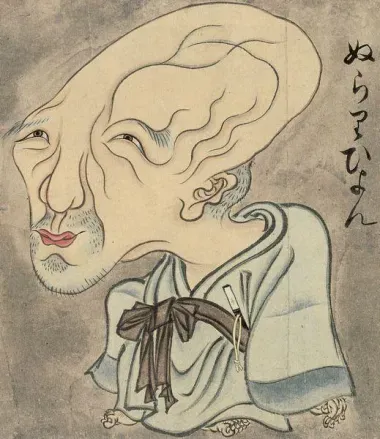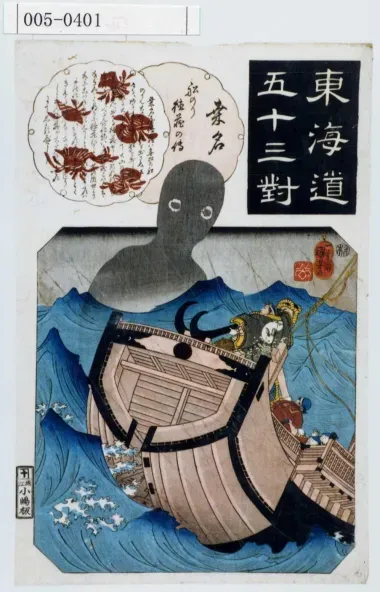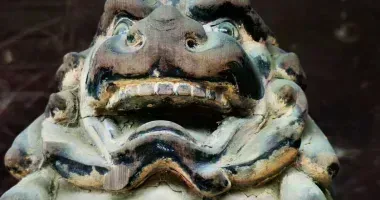Youkai of the Seto Inland Sea 瀬戸内海の妖怪



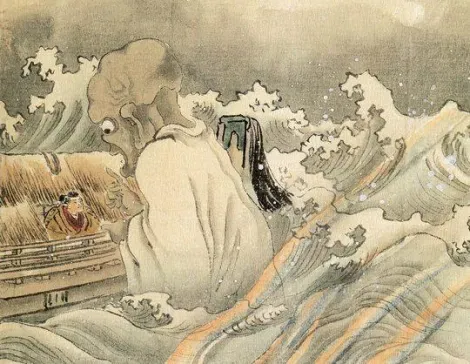

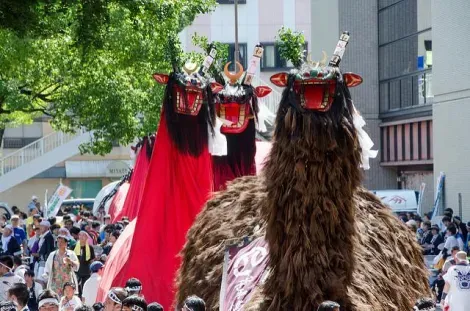
scary creatures
Demons, Ghosts and Spirits; Dantesque historical battles; pirates and brave warriors, Japanese myths and folklore... The Seto Inland Sea is at the heart of many legends, famous throughout the archipelago. In four chapters, Living in Japan makes you discover these extraordinary stories. To end this journey, let's explore the chilling stories of the youkai of the Seto Inland Sea.
Before reading: find out about Yôkai, Japanese ghosts, and monsters.
Nurarihyon
At nightfall, busy in your house preparing the meal, perhaps you did not notice the funny old man who took his place around the family table. He smokes your tobacco and drinks your tea as if your house were his. And the strangest thing is that it doesn't bother you at all. There is a good reason for this: you are under the influence of the nurarihyon!
This yokai whose name means "slippery gourd" is an extremely powerful creature. The nurarihyon is indeed considered the supreme commander of all yokai. It is he who leads the night parade of the hundred demons, the Hyakki Yokô, in the streets of the archipelago.
And yet by its appearance, the nurarihyon does not chill you with dread at first sight. Under the guise of an old man, this yokai wears elegant outfits (a silk kimono or a Buddhist monk's robe called a kesa) and moves exclusively in a palanquin carried by servants.
Appreciating delicate and luxurious dishes, he likes to slip inside opulent residences to enjoy them at his ease.
On closer inspection, a detail finally catches your eye. His head seems far too big for this frail little body. And for good reason; this one very elongated and disproportionate looks like a big gourd! But when you meet his gaze, the thrill wins you. Beneath the wrinkled features, his face resembles both an old man and a catfish!
In Okayama, the nurarihyon comes in a different form. In this local version, it is a fully round sea creature floating in the waters of the Seto Inland Sea. He defies fishermen who try to grab him by sinking into the water as soon as someone gets a little too close. Some of these globes would then have migrated to earth to become the nurarihyon as we know it traditionally.
Umibozu
The umi-bozu, monks of the sea, are terrifying black-skinned sea creatures that ships seek above all else to avoid.
They are the spirits of monks thrown into the sea by an angry population. This gruesome end made them ghosts seek revenge on men.
The umi-bozu attacks ships that have the misfortune to cross its path. Its appearance at sea causes the waters and skies to rage; thus putting an end to the calm night.
Described sometimes as being the size of a ship, sometimes like a giant whose only head emerges from the waters, the umi-bozu is gigantic. Everything is then a question of appreciation! It can in any case destroy a ship with a single overpowered blow.
Sometimes in a more mischievous mood, he may choose to use a barrel to pour water in very large quantities on the boat and its crew. But to this, the man found a countermeasure by providing the umi-bozu with a bottomless barrel. The youkai may scoop relentlessly, but he will never be able to drown the sailors on board.
Funayurei
The funayurei are also the avenging ghosts of people who have disappeared at sea who, carried by a bitter resentment towards the living, try to sink the boats. They would be the spirits of missing sailors wishing to drag their former comrades into the depths with them. To do this, they fill the vessels with water using a bamboo ladle, the hishaku.
Funayūrei mostly appears during bad weather nights when ships face the wind, fog, and rain. Often described as white spectral shapes, they can also appear as flames. It is said that in ancient times certain vessels sailed onboard hishaku pierced with holes to prevent the funayurei from accomplishing their fatal purpose and to drive them away.
Gashadokuro
If you hear behind you the "Gachi gachi", namely the sound of the teeth and bones of the gashadokuro clicking together, it is already too late. This giant skeleton is already swooping down on you, ready to crush you in its hands or bite your head off. Whoops!
A native of Hiroshima, the gashadokuro, or hungry skeleton, wanders the countryside around the Seto Inland Sea at night. It is formed from the bones of hundreds of dead warriors left abandoned on a battlefield. Unburied, their souls fill with pain, anger, and grudge and unite in revenge on men.
The most famous story of gashadokuro is 1000 years old. Immortalized by ukiyo-e master Kuniyoshi, it recounts how the witch Takiyasha-hime allegedly summoned a gashadokuro to attack the city of Kyoto and avenge her father's death.

Witch Takiyasha conjures up a gashadokuro. Print by Kuniyoshi.
Wikimedia Commons
Ushioni
If there is a scary yokai, it is the ushi oni. Nicknamed the Terror of the West, this yokai from Ehime Prefecture is particularly savage and cruel. However, the city of Uwashima celebrates it every year by organizing the Uwashima Ushi-oni festival at the end of July, during which the ushi-oni is performed and set in motion by several dancers.
A carnivore, the ushi-oni, or demon-ox, is fond of human flesh and likes to hunt its prey along the coasts of the Seto Inland Sea. His hybrid appearance could be the result of a terrible experiment. It has an ox's head surrounded by horns and a spider's body whose long legs end in long claws. It is sometimes described differently: a bovine body with an oni's head or an ox's head on a human body. He can inject his victims with a poisonous poison that causes terrible suffering.
He sometimes allies himself with other yokai like the mure-onna or iso-onna, who attract men to the edge of the water with their charms. Once on the beach, these poor unfortunates are then lost. The ushi-oni lunges wildly at its victim and sinks its sharp fangs into its flesh. What follows is happier; finally for the yokai since the story ends with a convivial meal between demons around the remains of the abused man!
For further :
- The Seto Inland Sea
- Setouchi Triennial 2019
- How to get around during the Setouchi Triennale?
- The Shimanami Kaido Cycle Path
- The Setouchi region
- Naoshima Island
- Teshima Island
- Shodoshima Island
- Inujima Island
- Honjima Island
- Ibukijima Island
- Awashima Island
- Shamijima Island
- Takamijima Island
- Ogijima Island
- Megijima Island
- Takamatsu City
- Uno Harbor
- Kosan-ji Temple
- The Myths of the Seto Inland Sea Islands
- Battles and legends in the Seto Inland Sea
- Pirates and Fighters of the Seto Inland Sea
- Youkai of the Seto Inland Sea
- Naoshima's open-air works of art
